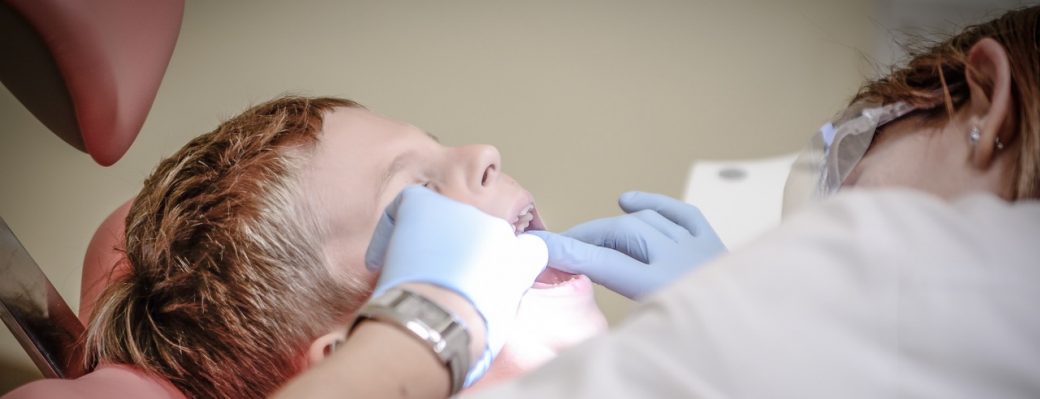People love the look of Invisalign, yet many shoppers still opt for braces. Traditional braces and Invisalign are two popular orthodontic treatments used to straighten teeth gradually. As both are FDA-approved devices that yield stunning results, it can be hard to know which method is best.
When choosing between Invisalign aligners and braces, shoppers should consider factors like the level of correction needed, age, and lifestyle. Here, we delve into everything consumers need to know to decide between Invisalign vs. braces.
Definition & Overview of Invisalign
 Invisalign is one brand of clear aligners, an orthodontic device that corrects crooked teeth. Clear aligners, also known as invisible braces, are custom-made mouthpieces molded from medical-grade plastic that apply pressure to teeth, guiding them to the desired position. Clear aligners are a discreet alternative to traditional metal braces.
Invisalign is one brand of clear aligners, an orthodontic device that corrects crooked teeth. Clear aligners, also known as invisible braces, are custom-made mouthpieces molded from medical-grade plastic that apply pressure to teeth, guiding them to the desired position. Clear aligners are a discreet alternative to traditional metal braces.
Shoppers should consider the benefits and drawbacks of Invisalign and traditional braces to determine which is better. Take a look at the pros and cons of clear aligners like Invisalign.
Pros of Invisalign
Appearance
Unlike metal braces, clear plastic Invisalign aligners closely fit a user’s teeth and are nearly invisible from a distance. A discreet style is one of the main reasons many people choose transparent aligners over braces.
Comfort
Clear aligners fit flush against teeth and don’t cause the cuts or discomfort that braces can. While wearers do experience some discomfort with teeth repositioning, the inside of the mouth is largely spared pain with Invisalign.
Ease of Brushing and Flossing
With clear aligners, users simply remove the mouthpiece and brush and floss normally. No need for a lengthy and challenging dental care process as with traditional braces.
No Danger With Hard or Chewy Foods
Braces wearers should avoid hard and chewy foods, including nuts, popcorn, and bagels, to prevent damage or irritation. But because people with aligners must remove them before eating, they don’t need to avoid these foods.
Fewer Orthodontist Visits
Some patients won’t need to visit the orthodontist as frequently with aligners as with braces. While Invisalign treatments usually require a visit every four to six weeks, some online companies provide customers with clear aligners and zero orthodontist visits. However, this isn’t the best option for everyone. For braces treatment, customers must come into the office for every adjustment.
Cons of Invisalign
Not for Complex Corrections
Transparent aligners do not work for every situation and are typically best for people who need only minor straightening.
Must Remove to Eat
Patients may drink water when wearing Invisalign trays but should remove them whenever eating or drinking anything other than water. The plastic is soft and easily damaged by food. Additionally, the clear plastic stains easily and warps with heat, so users should remove the aligners when drinking hot or colorful beverages.
Requires Discipline
 People must wear the Invisalign aligner for at least 20 to 22 hours daily. Wearing them less often may slow progress or even harm the final results. Because it’s easy to take them out, only people who are disciplined enough to wear them the required number of hours each day should opt for clear aligners. Another concern, especially for kids, is losing aligners, which costs more money and extends treatment time.
People must wear the Invisalign aligner for at least 20 to 22 hours daily. Wearing them less often may slow progress or even harm the final results. Because it’s easy to take them out, only people who are disciplined enough to wear them the required number of hours each day should opt for clear aligners. Another concern, especially for kids, is losing aligners, which costs more money and extends treatment time.
More Tooth Brushing
Users with poor dental hygiene should not wear an Invisalign aligner, as this can cause bad breath and cavities. After eating or drinking, wearers should ensure they clean their teeth with a thorough brushing. Because most people snack throughout the day, daily brushing time may double or triple when using Invisalign.
It may require Visible Attachments
Some people need small tooth attachments that connect to clear aligners like buttons. These attachments help control tooth movements and must be attached and taken off by an orthodontist. As a result, users who need attachments may require more consultations than others, and the attachments are visible through clear plastic.
Definition & Overview of Braces
Dental braces (also known as orthodontic braces or just braces) are devices used in orthodontics that align and straighten teeth and help position them about a person’s bite while also aiming to improve dental health. They are often used to correct underbites, as well as malocclusions, overbites, open bites, gaps, deep bites, cross bites, crooked teeth, and various other flaws of the teeth and jaw. Braces can be either cosmetic or structural. Dental braces are often used in conjunction with other orthodontic appliances to help widen the palate or jaws and to otherwise assist in shaping the teeth and jaws.
There are four main types of braces available today:
- Metal braces. These traditional braces are the most common type of braces worldwide and have been around for several decades. In the past, braces were very bulky and noticeable. But now, they are smaller and more comfortable to wear. Some parents and patients love metal braces because they do not need to remind their children to wear them. However, metal braces require care and attention, and good oral hygiene is a must throughout treatment.
- Ceramic braces. Ceramic braces are braces made of clear, tooth-colored material. They work in the same way as metal braces but are more discreet and less visible. Ceramic braces are most popular among patients who do not think Invisalign or lingual braces are right for them but still want to straighten their teeth discreetly and affordably. These patients tend to be aesthetically-driven adolescents and adults.
- Self-ligating braces. These braces work similarly to metal and ceramic braces and are available in metal or clear/ceramic material. They, too, rely on braces and a wire to move the teeth. The difference between self-ligating braces compared to metal or ceramic braces is that self-ligating braces use doors or clips to hold the wire in place, rather than elastic rubber ties.
- Lingual braces. Lingual braces behind the teeth are especially well-suited for adults who do not want noticeable braces but also have complex orthodontic needs. We have also seen an increase in the popularity of braces behind the teeth among esthetically conscious adolescents.
Pros of Braces
Works for Complex Corrections
Braces are a universal treatment that works for minor to complex cases. Adhering directly to each tooth makes braces more powerful than clear aligners, resulting in an incredible smile in even the most difficult circumstances.
 Multiple Options to Choose From
Multiple Options to Choose From
While metal braces are the most affordable option, you can also choose behind teeth (lingual) and ceramic braces for a more discreet appearance. Without the traditional metal brackets and wires, wearers can achieve excellent results.
Not Easily Removed
Unlike Invisalign aligners, users cannot remove braces without the help of an orthodontist. But the permanent attachment requires less responsibility. There’s no need to remove a mouthpiece before eating or ensure it’s in for at least 20 hours daily. Kids, teens, and adults alike may do better with this straightforward treatment approach.
Safe to Drink All Beverages
Braces don’t stain and are heat resistant, so wearers can drink tea, coffee, or other beverages throughout the day without the hassle of having to remove aligners or possibly stain attachments.
Cons of Braces
Mouth Discomfort
Metal braces are not very comfortable. They take time to get used to and often cause irritation or cuts along the inside of the mouth.
Appearance
Braces, especially traditional metal braces, are easily seen by others. While lingual braces and ceramic braces are less noticeable, on average, they are still more obvious than a clear aligner.
Food Limitations
People with braces shouldn’t eat several foods, including gum, bagels, hard candy, and popcorn, which may get stuck in the brackets or even damage the brackets or wires. A poor food choice can hurt and require a trip to the orthodontist.
Frequent Orthodontist Visits
While some invisible aligner users can do everything remotely, braces require regular orthodontist visits.
Can Leave Stains
Because metal brackets stay in place for an average of two years, users may find variability in tooth color after removal. Fortunately, most users can fix tooth discoloration by maintaining good brushing habits and whitening teeth after treatment.
Cost Comparison Between Invisalign and Braces
 Traditional metal braces are slightly more affordable than Invisalign. While more and more insurance companies cover the cost of Invisalign, you’re still more likely to have a little more coverage for metal braces. If cost is a concern, metal braces emerge as the winner here.
Traditional metal braces are slightly more affordable than Invisalign. While more and more insurance companies cover the cost of Invisalign, you’re still more likely to have a little more coverage for metal braces. If cost is a concern, metal braces emerge as the winner here.
While the actual price varies in every case, Invisalign generally costs around $5,000, with options from $3,500 to $8,000. Traditional braces can cost anywhere from $4,000 to $10,000, meaning that Invisalign is frequently the better economic alternative.
Effectiveness of Each Treatment Option
Invisalign and braces are both effective options for straightening teeth. Braces require regular visits to the orthodontist, while Invisalign is typically done at home with a series of customizable plastic aligners that you can change out as your teeth move into their new position. Invisalign is usually more comfortable than traditional braces and may take less time to see results. However, braces provide more control over tooth movement, which makes them ideal for certain cases. Both treatments are effective in helping improve the appearance of teeth and correct jaw alignment, so it’s important to talk to an orthodontist to determine what option is best for your needs.
Conclusion
In summary, while both Invisalign and traditional braces are effective ways to improve the appearance of teeth and address jaw alignment, it’s important to speak with an orthodontist to determine which option is best for you. Invisalign is comfortable, removable, and typically takes less time to see results compared to braces, but some cases may require more control over tooth movement than Invisalign can provide. Ultimately, the decision when choosing the right orthodontic treatment for you should be based on your specific needs and goals.
References:
https://en.wikipedia.org/wiki/Dental_braces
https://www.everydayhealth.com/dental-health/invisalign-vs-braces-which-is-better/
https://www.verywellhealth.com/invisalign-vs-braces-5218916
https://www.sciencedirect.com/topics/medicine-and-dentistry/dental-braces


